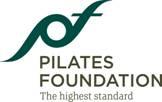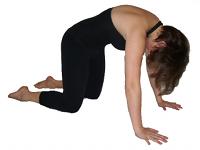- (+44) 07961 460 051
- info@rebeccagouldonline.co.uk


What is Pilates?
 Pilates is a balanced exercise method developed by its founder, Joseph Pilates, to provide strength and flexibility through increased body and mind awareness.
Pilates is a balanced exercise method developed by its founder, Joseph Pilates, to provide strength and flexibility through increased body and mind awareness.When you’re stressed, over training, or injured, the movement patterns and balance of your body change – without you even noticing, and your body tries to compensate. For example, when you have a bad back it may reduce the connection to your deep stabilising muscles – leading to more instability and further pain. So not only are your normal movements inhibited because of a bad back, but also your back may become more vulnerable due to the lack of support from muscles around the pelvis and the spine.
A Pilates teacher will look at each body and a person’s needs individually and work with you on a set of exercises appropriate for those needs – either in one-to-one or group classes. Whether you’re a dancer or a boxer, teenager or senior citizen, recovering from injury or trying to kick start a fitness regime: Pilates offers something for everyone.
One-to-one Pilates tuition gives me the chance to physically guide and provide in-depth feedback, allowing for a deeper understanding of the principles of Pilates and a programme devised for your needs. This can accelerate the time it takes to get the results you want, especially helpful for recovery from injury.
Group classes are a good way of discovering more about your body in a friendly environment. I like to keep the maximum number of people in a class to 10 enabling me to provide more individual alignment corrections and guidance.
There are six Pilates principles
| Breathing | Controlled breathing and flow is important with every exercise. It links mind and body, increases circulation, raises energy levels, improves concentration and mental function. The diaphragm muscle is one of the body’s stabilising muscles. Breathing correctly allows you to achieve deeper relaxation and tension release in the body, allowing you to work the deeper stabilising muscles giving you a strong base to work from |
|---|---|
| Centring | Focuses on the strength and control of the body's deep stabilising muscles (including the deep pelvis, back, and abdominal muscles). An energised centre builds a strong foundation for the rest of the body to work from. |
| Control | Each movement serves a specific purpose and is performed smoothly and rhythmically to bring increased physical and mental control. |
| Precision and concentration | Helps build the connection between mind and body to provide the isolation and precision needed in order to benefit from the specifically designed exercises. This is especially necessary when correcting muscular skeletal imbalances and changing compensatory movement patterns after injury. |
| Fluidity | Replaces quick jerky movements and encourages length and flexibility in the strengthening of muscles to help build tone while decreasing tension and stress. Somatic work (a way of controlling and improving movement) allows precision training to be integrated into bigger movement patterns that can be applied to daily activity and other sport. |
| Balance | Physical and mental balance corrects one-sided and uncoordinated muscle action. Promoting equal importance to movement and exercise mobilises the whole body. |